Meet the Mudpeople
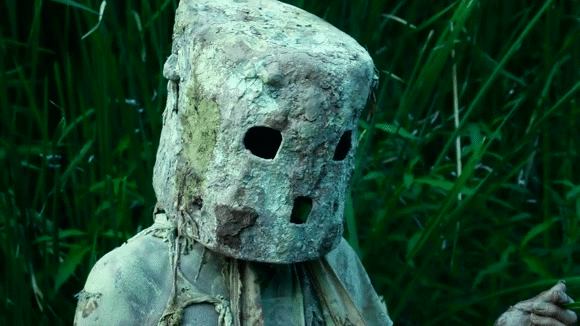
A segment on KCET's award-winning TV show "SoCal Connected" was based on this story. Watch it here now.
You may have seen them on the Venice Boardwalk, at the L.A. Convention Center or on the streets of Hollywood. They've also been known to frequent the banks of the L.A. River. They are the L.A. Mudpeople, a tribe of urban primitives who get naked, smear their bodies with mud, and walk -- slowly, deliberately -- around their surroundings.
"We're essentially living sculptures," explains Mike M. Mollett, who founded the troupe a quarter century ago, and still leads members on walkabouts and what he calls "non-performances."
Adds the 60-something Mollett: "We're an antidote to speed, stress, goals and time in this urbanizing society. As Mudpeople, we do not speak, so people must come up with their own answers as to who we are and why we're there, which may also put them in a position to wonder about themselves, and why they're moving so quickly."
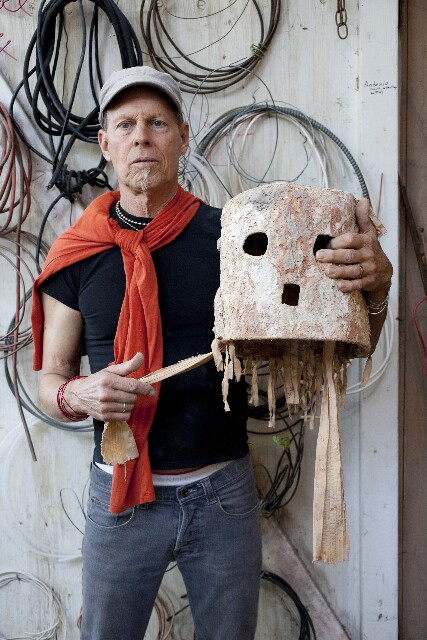
And talk about multi-hyphenates: Mollett is a poet, sculptor, gardener, substitute teacher and performance artist, who first dabbled with mud in 1989, after being inspired by pictures of Colorado mudpeople. He booked himself and a few others at a now-defunct African-Reggae club as a one-off entertainment. The group donned plaster of Paris mud heads, slathered their nearly naked bodies with the stuff, and ambled, checking out their environment.
Mollett says he got hooked on the ritual, not to mention the liberating effects of near-nudity masked by mud, and became the de facto leader of the tribe.
"As a Mudperson," says Mollett, "you need to be able to just hang out, observe the environment and what's going on inside yourself. It's somewhat of a spiritual process, so you need to let go -- of goals, directions and of needs, I suppose."
The ranks of the L.A. Mudpeople have swelled upwards to 40 over the years, with the group having participated in more than 75 events, including the Doo Dah Parade and the World Festival of Sacred Music. They've journeyed to Joshua Tree National Monument and Santa Barbara and have been featured in Time Online, National Geographic Magazine and on various TV shows around the world, including Huell Howser's "Visiting." The troupe has also had exhibitions at UCLA and Cal State L.A featuring their artifacts, fetishes and other relics/garb.
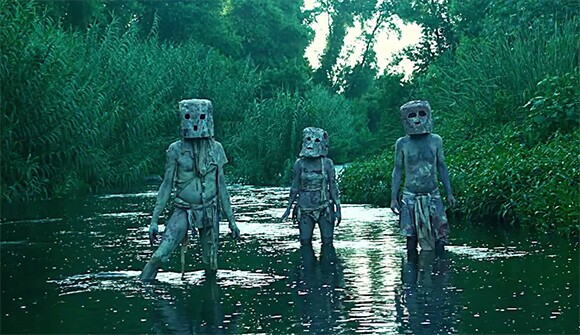
MUD PEOPLE explore the Los Angeles River from D. A. Metrov on Vimeo.
Last year D. A. Metrov filmed the "Mudpeople in the L.A. River," a regular haunt of theirs since 2004. As to their walkabouts, the group has explored Bunker Hill, Melrose Avenue and Old Town Pasadena. In one of the Mudpeople's earliest incarnations, actor Leonardo DiCaprio, then about 15, took to the streets of Venice in a handmade mud head.
"We get mud from Silver Lake, Hollywood, the Gold Rush part of the state," explains Mollett. "Then there's commercial mud -- from the art store, potter's clay. That's what we use the most. I also ask people who get around to bring me mud," adds Mollett, "but I love L.A. mud. It's a dark umber -- black, really -- and it's great."
For a voiceless Mudperson, Mollett is quite animated. "We evolved into silent, slow-moving, non-speaking deliberate people. Once you get that, there's nothing else you have to do or worry about."
In addition to keeping the Mudpeople flame burning, Mollett, who has been a part of the Los Angeles art scene for some 40 years, regales with tales as a native son. Born in Pasadena, the man with boundless energy and elastic face, graduated from California Sate Polytechnic University with a degree in biology. This came in handy, he says, when he found a toad in his parents' swimming pool at their house in Covina in 1974.
"I saved it a few times," recalls Mollett, "and finally it died. I did a crucifixion on a street in the middle of Covina."
Two years later, Mollett cruised the streets in a '64 VW bus, or AAV -- Alternative Art Vehicle -- upon which he wrote a "Question-of-the-Month," pertaining, he says, to "society, culture and art.
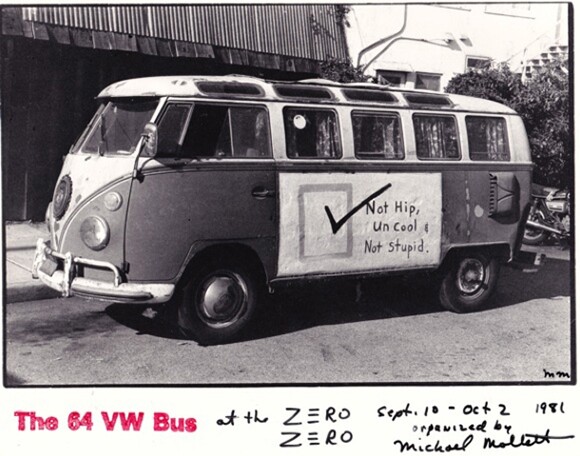
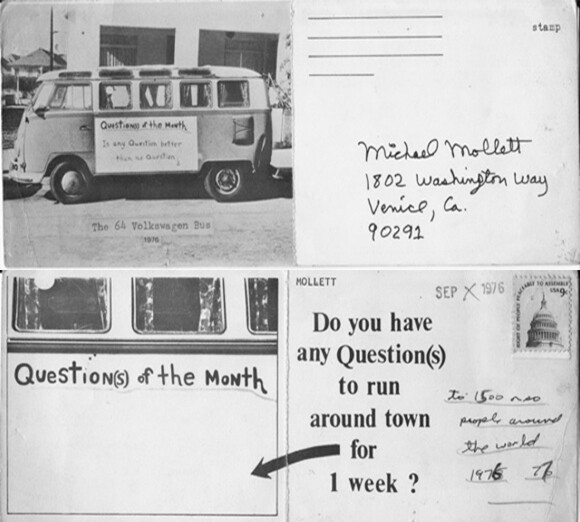
"I sent out postcards to a literary and art mailing list of 1500 people from all over the world, asking for a question. Chris Burden, George Herms, Barbara T. Smith - they all sent cards back with their questions."
Musings ranged from, "Why circumcision?" to "What's the square root of existence?" Mollett would then paint the question on his bus before driving it around for a month. He would also photograph the bus, which eventually became a weekly drive-around objet d'art, turning that photo into an oversized postcard that he would keep sending out.
"That went on for seven years," recalls Mollett, "and that's what got me into mail art."
Indeed, from operating his AAV to creating postcards and rubber stamps, Mollett began making books. Judith Hoffberg, who died in 2009 and was a major influence in the emergence of books as an artist's medium, dubbed the bus a book.
"I did about 50 books. Of course, some were editions of one, and others only took a minute to make. I considered myself a xerographer," recalls Mollett, "an artist who used a photocopy machine. I would modify, stamp, punch holes, burn a bit of the book. I'd send those off to mail art shows."
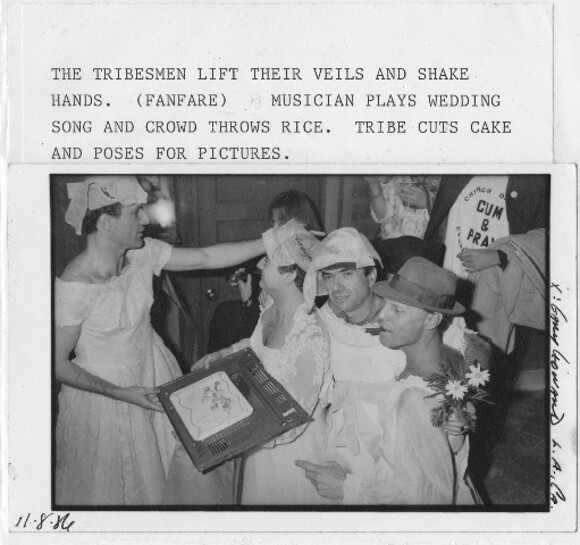
Mollett forayed further into Dada. In 1980, with visual artists Patty Sue Jones and sometimes Mudperson Neal (Skooter) Taylor, the trio created DADAFEST L.A. A six-week multi-venue series of Dada performances, it included four exhibitions, with a found object show at Otis and another in a mental institution, as well as a series of dinners and a parade.
Several years later, Taylor and Mollett formed ZTZU Gallery. The L.A. Weekly called it, "the ugliest gallery in Los Angeles."
Owned by the American Red Cross, the building was located in the MacArthur Park area, where the duo began offering themed group shows, such as "Love and Money" and "The Turkey Show." More than 100 artists participated, including poets, performance artists such as Johanna Went, and visual artists from Robt. Williams to Mark Gash.
But after eight months, Mollett and Taylor were asked to vacate the premises, which had been condemned, the finale featuring musicians, The Minutemen and Ulysses Jenkins. "We never tried to make any money, and most of the time it was free or else it was 99 cents. It was for the pure joy of making art and involving people," says Mollett, wistfully.
In 1985, Mollett joined with three other colleagues to create The Lost Tribe: Actor/poet S. A. Griffin (his 2014 poetry collection, "Dreams Gone Mad With Hope," is published by Punk Hostage Press); monologist/poet Doug Knott, whose show, "The Last of the Knotts," has been a critical hit in recent years; and Michael Bruner, a Ph.D currently living in Atlanta.
The Tribe performed frequently at The Lhasa Club, a Hollywood venue owned by Jean-Pierre Boccara. Featuring underground, emerging and established artists, this hot spot also hosted rockers Henry Rollins, Excene, and the Red Hot Chili Peppers' Flea, among others, as well as performance art gurus, including John Fleck.
"I considered myself a punk poet," declares Mollett, "then the Lost Tribe started to become successful -- gigging in other clubs and at art events. Our highlight was winning on The Gong Show -- with the lowest score ever -- for our 'Slobs in Suits' routine. We wore suits, carried the Wall Street Journal and briefcases. It was very choreographed - with brooms, beer cans, partial animal masks. We were very physical."
And ahead of their time: The Lost Tribe ran for president, and also got married -- to each other -- in 1986. In a ceremony documented by the Weegee of Los Angeles, Gary Leonard, whose column "Take My Picture Gary Leonard," has been a Los Angeles fixture for decades, with a downtown gallery of the same name currently located on Broadway, the guys wore wedding dresses and offered guests cake and "money" sandwiches.
But as all good things must end -- or at least morph -- so, too, did The Lost Tribe evolve into The Carma Bums, a looser version of the Tribe plus the addition of the late Scott Wannberg. (A giant of the L.A. poetry scene, Wannberg, who worked the counter at Dutton's Brentwood bookstore for 25 years before it closed, died in 2011, with the Scott Wannberg Bookstore and Poetry Lounge at Beyond Baroque having one of the largest collection of new and used poetry books in the city.)
After the Lhasa Club's Boccara closed shop in Hollywood and opened Luna Park, the Bums kicked off their 1996, "Twisted Tour of Words" at the West Hollywood nightclub. One of the group's biggest fans was actor Viggo Mortensen, who came to see the show and wished the Bums bon voyage before they toured the West Coast, the Southwest and Kansas City.
Mortensen, himself a poet and publisher, helped fund the Bums' documentary, "The Luxurious Tigers of Obnoxious Agreement," released in 1998. In an open letter describing the Bums, Mortensen wrote: "GENIUS. Threw away all plots, kept no records, gave themselves cancer, became one mouth, eating all of themselves, unedited, wanting no further circumcision (unlike so many of us, bravely throwing the printed word into disremembered vacuums) -- challenging spiritlessness every step of the broken way."
When the Bums broke up in 2009, the group had racked up hundreds of performances in settings ranging from art galleries, biker bars and libraries, to cabarets, coffee shops and even an old growth forest. A book of their poetry, "Twisted Cadillac - A Spoken Word Odyssey," was published by Sacred Beverage Press, with Beat poet/bookstore owner, Lawrence Ferlinghetti calling it, "A hot rod of a book."
The Bums are also represented in the seminal anthology, "The Outlaw Bible of American Poetry" (co-edited by Griffin), which can be found on Amazon, and Mollett and Bruner also contributed a hypertext poetic novella, "After the Break-In," to Evergreen Review.
Performing with both the Lost Tribe and The Carma Bums, Mollett made numerous solo appearances, as well. His recurring bits on the long-running cable access TV show, "The Looseleaf Report," included, "The Insensitive Naked Man/Gardener" and "Mike Mollett's Literary Minute." (AND Prior to doing "The Looseleaf Report -- my cable access show in the early to mid-80's -- the irrepressible performance artist also was a regular on another cutting-edge cable TV show, "New Wave Theater," hosted by the late Peter Ivers.)
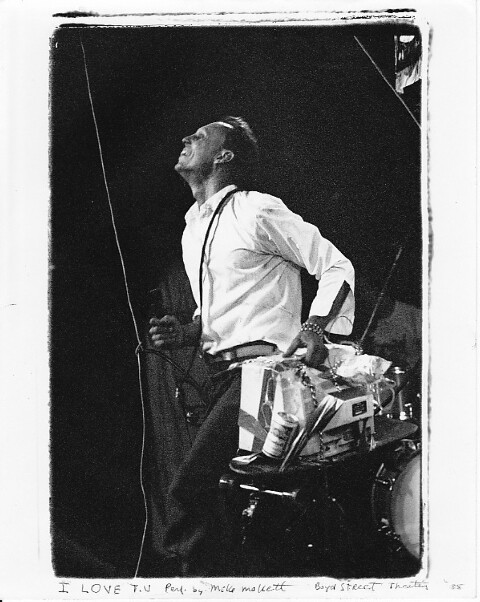
So how does someone like Mollett subsidize his art-making needs? He continues to work as a substitute teacher for preschool through sixth grade, where he often incorporates storytelling and his art into the classroom.
"I'm great with visual art, writing and language, and I can fly under the radar somewhat and still do the teaching with some of my own stuff."
Mollett still gigs around town, too: Last month he did a Cagean/Dada performance at Beyond Baroque (other L.A. figures included poets Linda J. Albertano and Laurel Ann Bogen, also performed), where he sat, in silence, pulling out a few pens, pencils and a notebook. Part of the official West Coast launch of "Maintenant 8: Journal of Contemporary Dada Writing and Art," published by Three Rooms Press (Mollett has a piece of artwork in the current issue), the event was co-hosted by the press's co-directors, New York-based performance artists Peter Carlaftes and Kat Georges.
And Mollett's sculptures have recently been garnering attention: Balls and bundles made from found art and that are derived from his work as a gardener, landscape artist and Mudperson, they range in size from six inches by one-inch up to 18-1/2 feet high and weighing 350 pounds. The balls can be as small as a golf ball or measure six feet in diameter.
The art, which he has been making since 1999, is instantly identifiable, and has been seen in a number of exhibitions, including at Highways Performance Gallery (2010), and a pop-up art space in Eagle Rock, PlayLand (2010), which also featured a Mudcave. (In 2009, Mollett also created The Mud Room at the El Cortez Hotel in Reno, Nevada, as part of the NadaDada Festival with several Mudfolks donning mud heads and accouterments for the better part of a week.)
Last year, Highland Park's Matters of Space featured Mollett's work in a solo exhibition, while group shows have included L.A. Municipal Art Gallery and L.A. Art Association's Gallery 825. Currently, Mollett has three works, including a mud head and a sculpture made from materials found in the L.A. River, in a show of L.A. artists, "Los Angeles Contraventions," featured at the Gallerie Merkel in Wyhlen, Germany.
"I've always been interested in process, found objects, aging, patina - how things that are just out there change," explains Mollett. "The idea of collecting materials -- I call my bundles time/twists -- they're like time capsules or materials from our lives that have something to say about us, our culture, our society -- where we live, how we live."
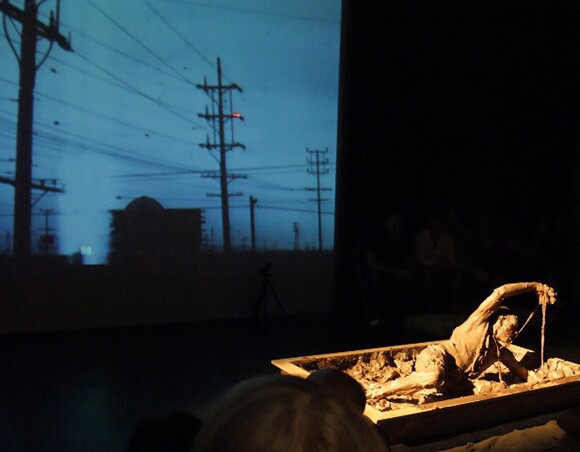
Dig this story? Sign up for our newsletter to get unique arts & culture stories and videos from across Southern California in your inbox. Also, follow Artbound on Facebook, Twitter, and Youtube.


